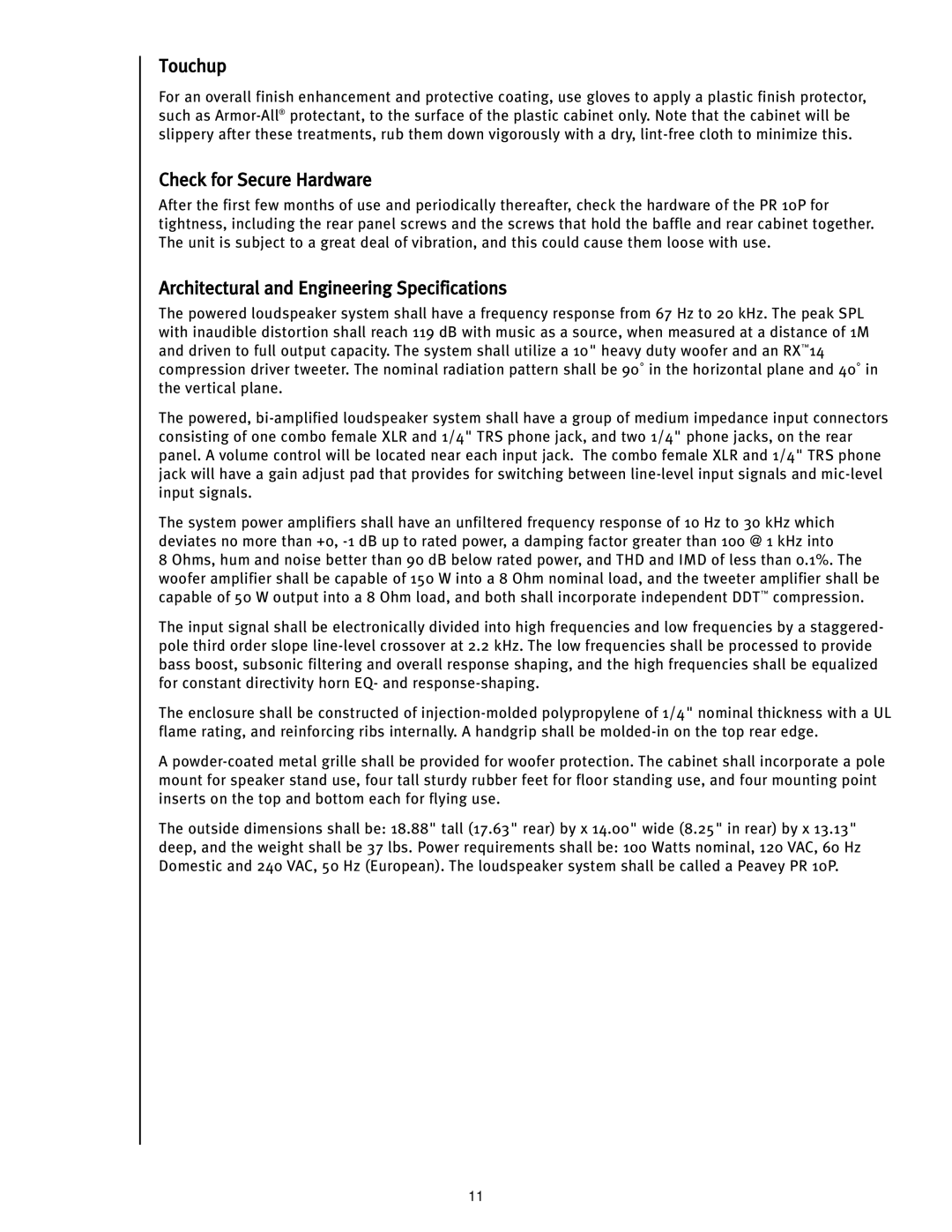Touchup
For an overall finish enhancement and protective coating, use gloves to apply a plastic finish protector, such as
Check for Secure Hardware
After the first few months of use and periodically thereafter, check the hardware of the PR 10P for tightness, including the rear panel screws and the screws that hold the baffle and rear cabinet together. The unit is subject to a great deal of vibration, and this could cause them loose with use.
Architectural and Engineering Specifications
The powered loudspeaker system shall have a frequency response from 67 Hz to 20 kHz. The peak SPL with inaudible distortion shall reach 119 dB with music as a source, when measured at a distance of 1M and driven to full output capacity. The system shall utilize a 10" heavy duty woofer and an RX™14 compression driver tweeter. The nominal radiation pattern shall be 90˚ in the horizontal plane and 40˚ in the vertical plane.
The powered,
The system power amplifiers shall have an unfiltered frequency response of 10 Hz to 30 kHz which deviates no more than +0,
8 Ohms, hum and noise better than 90 dB below rated power, and THD and IMD of less than 0.1%. The woofer amplifier shall be capable of 150 W into a 8 Ohm nominal load, and the tweeter amplifier shall be capable of 50 W output into a 8 Ohm load, and both shall incorporate independent DDT™ compression.
The input signal shall be electronically divided into high frequencies and low frequencies by a staggered- pole third order slope
The enclosure shall be constructed of
A
The outside dimensions shall be: 18.88" tall (17.63" rear) by x 14.00" wide (8.25" in rear) by x 13.13"
deep, and the weight shall be 37 lbs. Power requirements shall be: 100 Watts nominal, 120 VAC, 60 Hz Domestic and 240 VAC, 50 Hz (European). The loudspeaker system shall be called a Peavey PR 10P.
11
